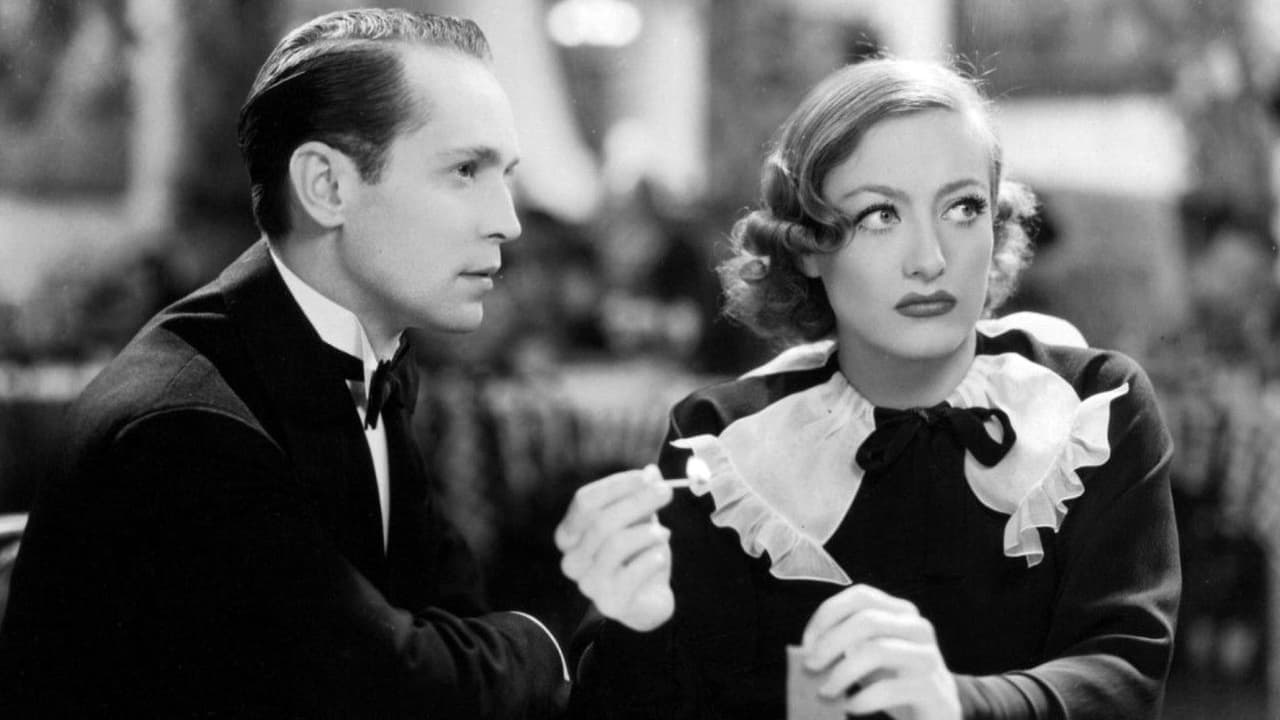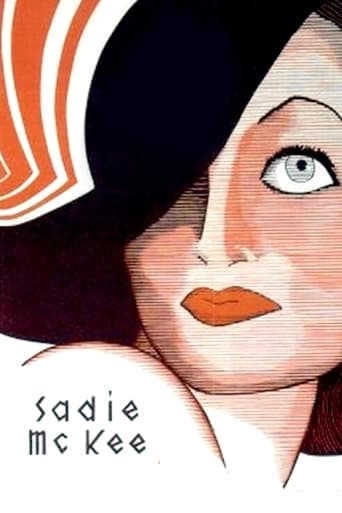



The Worst Film Ever
Fantastic!
One of the worst ways to make a cult movie is to set out to make a cult movie.
View MoreExcellent and certainly provocative... If nothing else, the film is a real conversation starter.
View More"Sadie McKee" was made just before Hollywood got serious about sanitizing its content, and the movie is set squarely in what we now call the pre-Code world. In this world, men are on the make, cops are on the take, rich people do pretty much as they please and prostitution is just another job option.But while many other pre-Code film can leave you with a bleak feeling about human nature, this one is stocked with basically decent characters. Bribe-takers are just ordinary folks trying to get by. A clever seducer can't silence his own conscience. And when an aging, drunken millionaire orders up a young girl and takes her home for the night, the relationship quickly blossoms from exploitation into an odd kind of love.Joan Crawford plays the title role, a plucky survivor whose ups and downs would have broken a lesser person. Gene Raymond, Franchot Tone and Edward Arnold play the three very different men in her life. The story is improbable at times, moving from flophouse to sleazy nightclub to mansion. But it's never gets so unrealistic that you stop caring. The ending is somewhat enigmatic, at least to me. I'm still wondering exactly where everyone stood at the end, and where things were headed. That's OK. I like a movie that leaves a little something nagging at you.If the story is improbable, there's nothing unbelievable about how Joan Crawford's character turns men's heads. A lot of people still view Crawford through a "campy" lens, remembering her long years as a fading star with a lot of personal baggage (real and reputed). Forget all that stuff. In 1934 she was young and lithe and simply gorgeous. She carries this movie, and she carries it well.
View MoreFrom the cook's daughter to employer of a cook, Sadie McKee (Joan Crawford) has a lot on her plate. Engaged to Tommy (Gene Raymond), she moves with him to New York but he leaves her for a chorus girl. Working in a nightclub chorus line herself thanks to neighbor pal Esther Ralston, Crawford marries drunken millionaire Edward Arnold on the rebound making her the scourge of New York society as well as her own kitchen. But Crawford only has noble motives and vows to make Arnold sober when his doctor tells her that his continued drinking will surely kill him! Not wanting him to suffer another "Lost Weekend", Crawford has an intense scene where she threatens to fire the staff who refuse to acknowledge her marriage to Arnold.Music plays an important part in this well-acted soap opera with Raymond's recurring singing of "All I Do Is Dream of You" and a nightclub scene where the chorus comes out of what looks like a dresser drawer underneath the orchestra. 1934 was a busy year for Crawford, and she was outstanding in all three films she made that year. I used to confuse Gene Raymond and Franchot Tone (here cast as Arnolds' attorney, ironically an old pal of Crawford's), but after seeing them here together, I never will again, even though the roles they played were basically interchangeable. Arnold gives one of his best performances as the lovable drunk who gets violently furious when anybody tries to take away his liquor. Here, he is one of those actors worthy of Supporting Acting Oscar consideration several years before that prize was given. Esther Ralston is worthy of praise as well. Brilliant art decco set design and some great photography, particularly the hospital scene where snow falls outside the enormously large windows.
View MoreSADIE MCKEE is very typical of Joan Crawford's films of the late 20s and 30s. As was usually the case, she plays a poor working girl who eventually makes it big....though in this case she seems far less set on wealth than her other films--it just "drops on her", so to speak.The film begins with Joan as a maid in the home of a rich family whose son is Franchot Tone (who married Joan in real life). She likes Tone but also likes Gene Raymond. When she hears Tone bad-mouthing Raymond and saying Raymond was a bit of a scoundrel, Joan is quick to Raymond's defense. As a result of her blow up at Tone, she impulsively leaves her job and runs off to New York City--where she ultimately discovers Raymond really is a jerk! Oddly, instead of Joan and Tone patching up their differences, they continue to have a thorny relationship--even though you know down deep they care for each other. Much of the rest of the movie involves their on again/off again contact with each other. While most everyone in the audience knew that EVENTUALLY they'd make up and be together, I appreciated how the film placed so much plot in their way--things that made the most ordinary plot actually seem different. This complexity was generally very welcome, though the intervening marriage to Edward Arnold and her unflagging feelings for Raymond were a bit inexplicable.For a long time, I have not particularly liked Joan Crawford's films--especially when she made so many formulaic films in the 20s and 30s involving a poor girl wanting to get rich. After a while, they all just seemed repetitive. However, despite this film also having such a theme, it is still a fine movie and has me re-thinking my attitude towards her. This film, while a bit of a soap opera, was exceptionally engaging and sure kept my interest. Plus, I've seen many of her films recently and have to admit that while not every film has been that great, her acting was usually very professional and very competent. In essence, I have gone from a "Crawford hater" to at least someone who respects her talent and has really enjoyed several of her films.See this film and you'll see one of the better films of the era. Good writing, excellent acting and a humanity that surprised me about Crawford's character.
View MoreI'd have to describe Sadie McKee as both the typical Joan Crawford vehicle and the typical Franchot Tone vehicle. The two of them who were husband and wife when the film was made are perfectly cast in roles that typified their images in the Thirties.Crawford is the daughter of a cook on the sumptuous palatial Long Island estate where Tone is the young heir and a lawyer by trade. To earn a few extra bucks Crawford occasionally helps mom out serving at formal meals.At one of those meals she hears Tone disparaging her sweetheart Gene Raymond who was caught in a petty theft. Tone makes a big point in saying we can't give people like these help because they're no good. Crawford throws a fit and runs to Raymond.She almost marries Raymond, but he runs out on her for Esther Ralston. In New York working as a nightclub cigarette girl she runs into Edward Arnold who is a millionaire with a severe drinking problem. No doubt caused by drinking a lot of rotgut liquor during recently repealed Prohibition. And wouldn't you know it, Tone is his lawyer.So Sadie has her three men, give you one guess who she winds up with in the end. You'd probably guess right, but let's say it's a character altering experience for all.Sadie McKee is probably a good example of the Joan Crawford shop girl before she became a hardened creature like Crystal Allen in The Women. As for Franchot Tone, MGM just loved casting him as rich men in a tuxedo, probably because he looked so darn good in them. The only way either of them escaped type casting was as they got older they varied their parts due to age. Crawford was ever the film star, even in some of the horror flicks she did in the sixties. Tone went right into television and worked steady right up to his death.Sadie McKee however is a good opportunity to see them both young and at the height of their fame. Also note the Nacio Herb Brown-Arthur Freed ballad All I Do Is Dream Of You comes from Sadie McKee.
View More